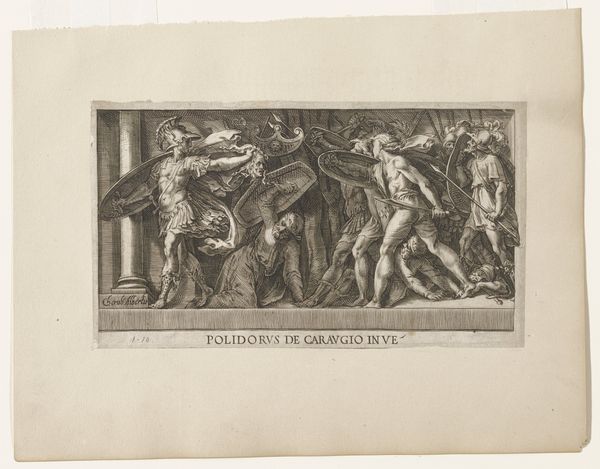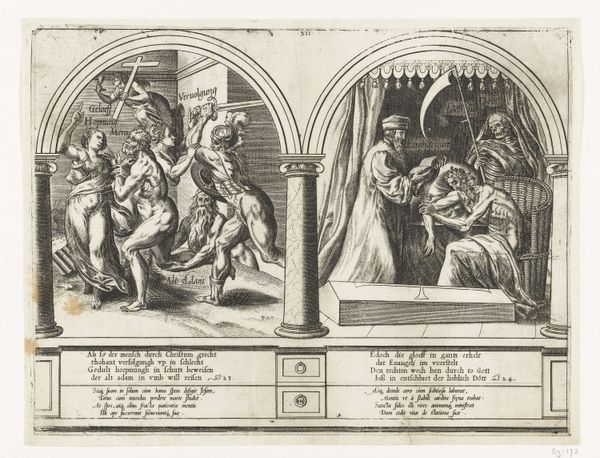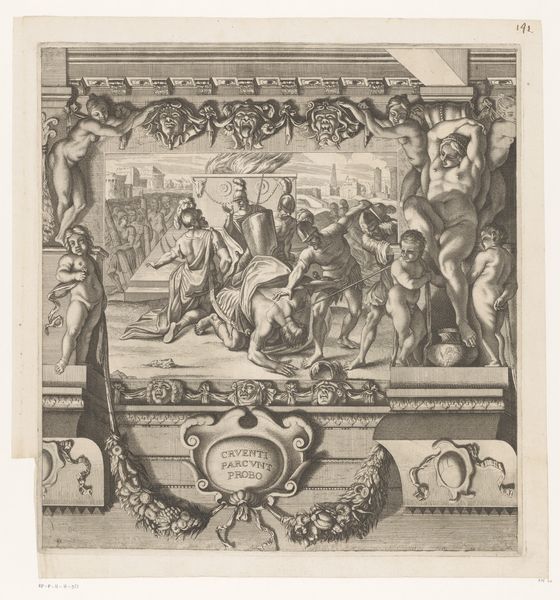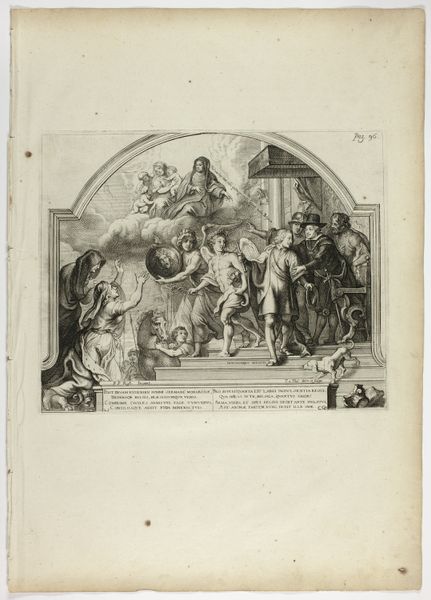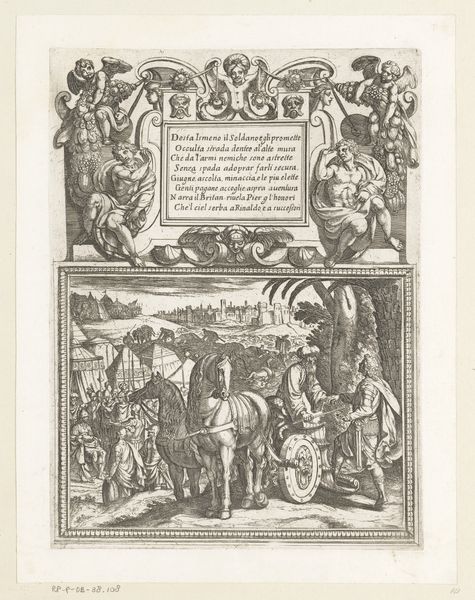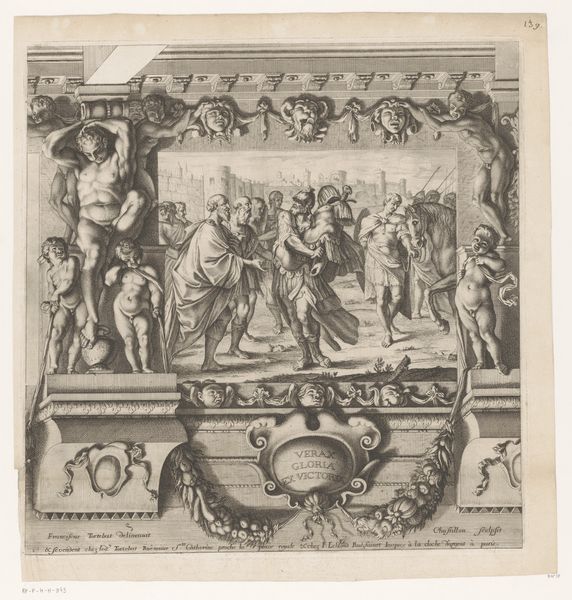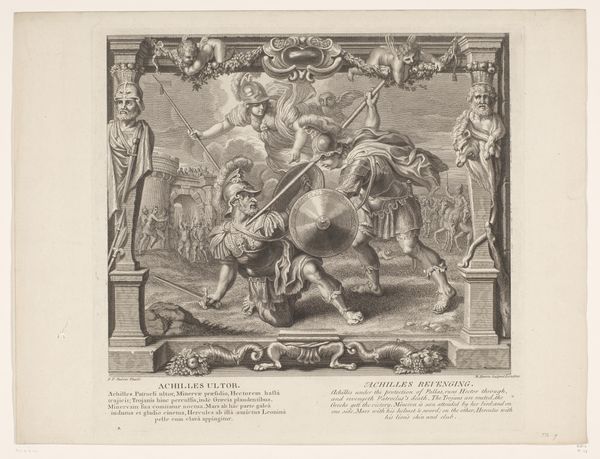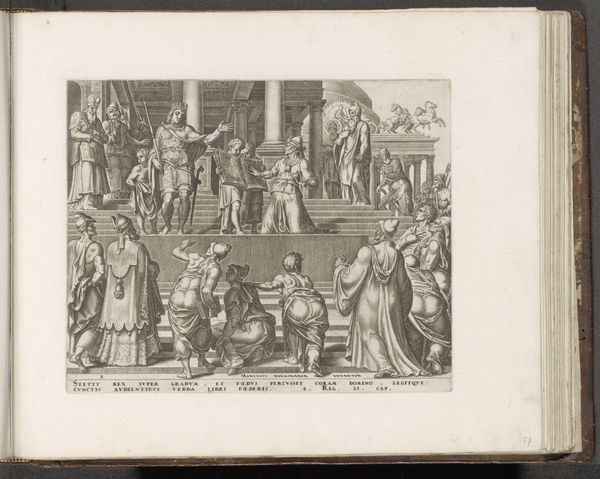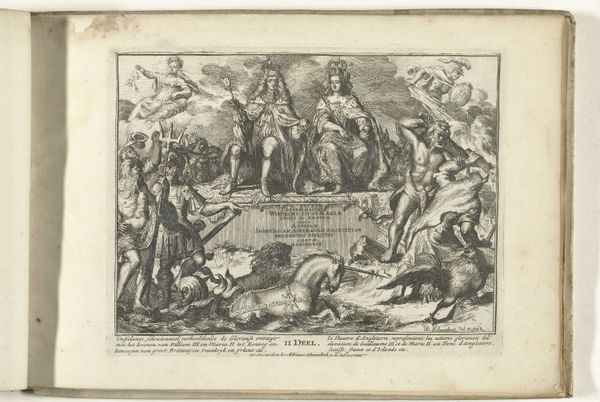
Romulidae spreti ludi connaubia quaerunt dum cadit in quasuis rapta Sabina manus 16th-17th century
0:00
0:00
print, engraving
#
baroque
# print
#
figuration
#
history-painting
#
engraving
Dimensions: 6 1/8 x 8 7/8 in. (15.56 x 22.54 cm) (sheet)9 1/8 x 11 13/16 in. (23.18 x 30 cm) (mount)14 1/16 x 18 1/16 in. (35.72 x 45.88 cm) (mat)
Copyright: Public Domain
Curator: Standing here, we're observing "Romulidae spreti ludi connaubia quaerunt dum cadit in quasuis rapta Sabina manus," a striking engraving created sometime in the 16th or 17th century. The print currently resides here at the Minneapolis Institute of Art. Editor: It's intense, isn’t it? There's such an aggressive energy radiating from the print, and the composition feels almost like a pressure cooker about to burst, I wonder what we're seeing here. Curator: The piece illustrates the "Rape of the Sabine Women," a foundational myth in Roman history. We witness the abduction of women from the Sabine tribe by Romulus and his followers, an act designed to populate the newly established city of Rome. Editor: Ah, the charming origin story! It’s interesting how it portrays the act of abduction. Looking closely, there's a distinct sense of forced capture, which underscores the historical context of patriarchal power dynamics and conquest. You see those clusters of figures, almost colliding in this violent ballet of Roman ambition, right? The Sabine women are clearly victims in this moment, there are terrified and actively resisting, don't you think? Curator: Absolutely. But the very circulation of such an image raises critical questions. Consider its creation during the 16th-17th century when the print was circulating; what purpose did glorifying such events serve in that social and political context? Did it perhaps reinforce certain power structures? Editor: Undoubtedly. This artwork then isn’t simply a historical depiction; it's an ideological artifact. This reminds me how interpretations and re-interpretations of similar images perpetuate a narrative where masculine dominance is legitimized, and female agency is erased. And the artistry itself--it’s almost a propaganda piece of that time. Curator: And the scale of distribution offered by printmaking ensured that the ideology could disseminate broadly throughout the European population. This print, beyond its formal qualities, engages directly with political and social structures of its time. The role of the Alberti print shop, and prints like this produced within it, deserves a more thorough reckoning in terms of how it promoted such problematic stories. Editor: Absolutely, it makes one consider who commissioned it and how the target audience influenced its imagery and underlying message. Thank you, for the important socio-historical perspectives of this seemingly antique engraving. It's been illuminating to examine how a single image embodies so many cultural implications that persist even now.
Comments
No comments
Be the first to comment and join the conversation on the ultimate creative platform.
